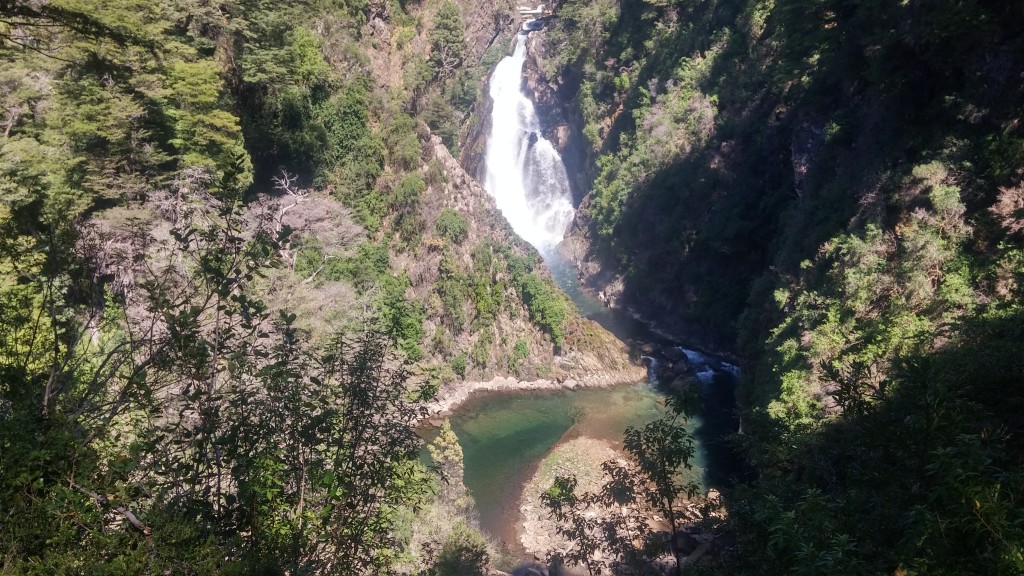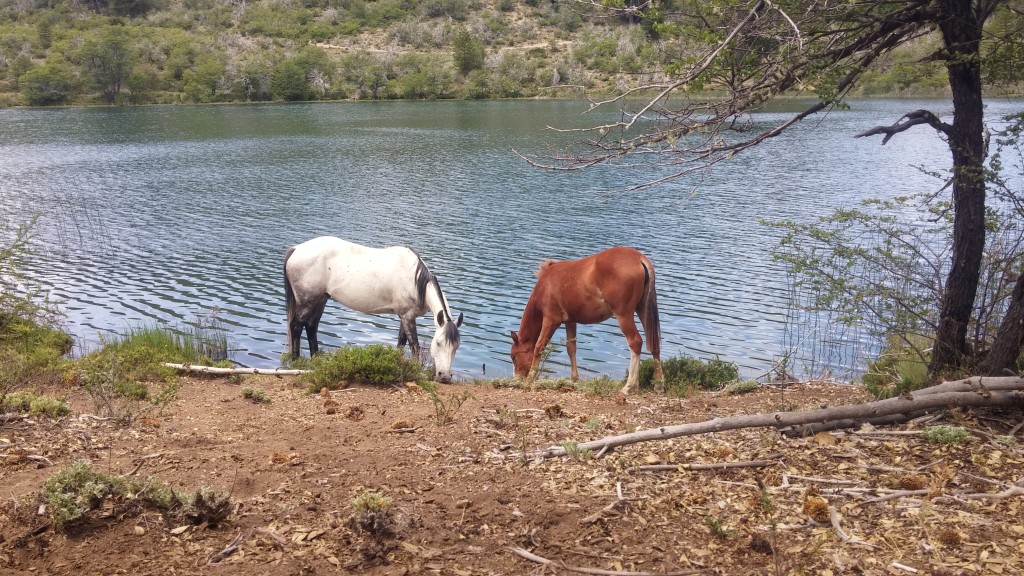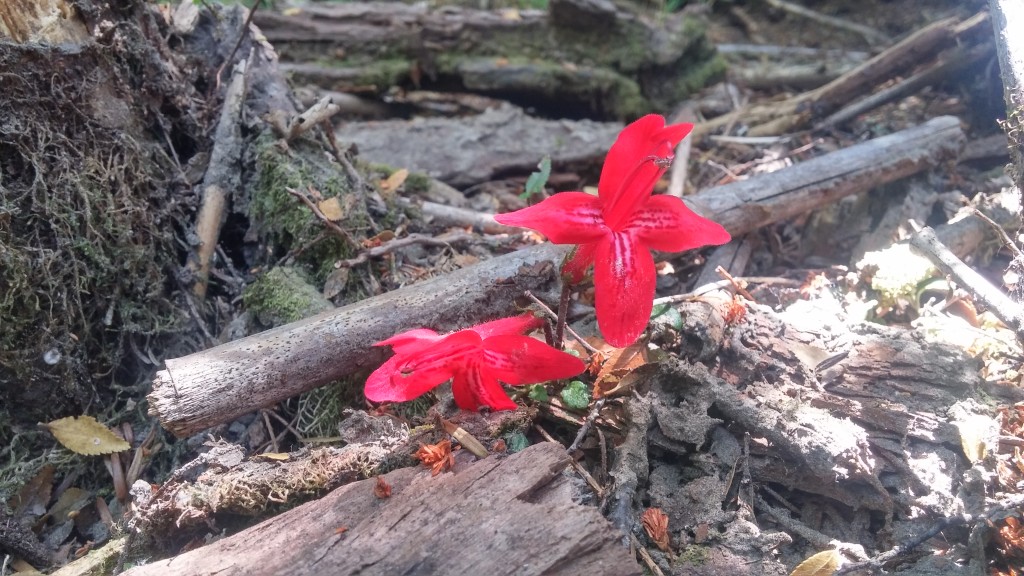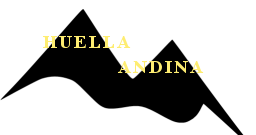Information about the Trail, Stages, Equipment
 General Information about Huella Andina
General Information about Huella Andina
- Huella Andina is a signposted, long distance (600 km) trail in northern Patagonia.
It links Lake Aluminé, in the north, with Lake Baguilt, at the southern end of the trail (with a few necessary bus/boat/hitchhike connections in between the stages).
- The trail runs through the provinces of Neuquen, Rio Negro and Chubut, and passes through five National Parks: Lanin, Nahuel Huapi, The Myrtles, Lago Puelo and Los Alerces.
- The trail is designed primarily for walkers with little experience, however, some stages require higher level of fitness, and hiking experience. Each stage has a difficulty level assigned, ranging from low to high, however, according to the experience of the author, the difficulty levels are sometimes underrated.
- Huella Andina is a governmental project, and, similarly to any other project run by the government, it has some upsides and some downsides, which I will elaborate on later in this article and other pages.
- Important update: Government stopped funding the project, and the official website of the track (in Spanish) doesn’t work anymore. However, the trails are still there (at least those that existed in 2016), as well as camping places (which had existed way before Huella Andina was born, since they serve also locals who drive there to enjoy nice weekend with family or friends. You can still definitely walk the trail, however, a better preparation (including a careful reading of our website, and having an application such as Maps.me installed on your phone) is strongly recommended.
 Surprises, What the guide won’t tell you
Surprises, What the guide won’t tell you
- Despite of extensive marketing campaign (movie about Huella Andina, promoting the trek in national TV, etc.) you will find most of the stages deserted–you won’t meet many hikers on your way (having said that, the rarity of encounters make every new one special and precious, and I hope this website will bring more people on the trails…).
- With the exception of San Martin, San Carlos de Bariloche, and Bolson (and stages located close to these cities), you should not expect to get around with English. Most people won’t understand a word, so you’ll need to learn at least the basics of Spanish (which can be done in a week, so no worries, apps such as Duolingo can help you greatly).
- Most of the time you’ll sleep in camping places, which are typically located near the plenitude of magnificent lakes that dot the way along Huella Andina. Most of the camping places are paid, and while some of them are well-maintained and clean, some are in a bad condition. Luckily you will have more options, and I’ll suggest you the best camping places in various locations (check the stages section for more on this).
- Argentina, and especially Patagonia, isn’t as inexpensive as one may anticipate, considering the poverty in Argentina. Count with minimum daily expenses of $30. My average daily expenses were about $40, and I have eaten in a restaurant just three or four times during the entire trip.
- South America isn’t Europe. You’ll find a beautiful wilderness, sense of freedom, and freshness of air second to none. On the other hand, the infrastructure is practically non-existent, and it can easily happen to you that you’ll need to wait two days for a bus, or, despite of the information in the guide, find no shop where it was supposed to be. If you feel scared by this idea, this trail is not the right choice for you.
- Water in Patagonia is drinkable, and you should not worry drinking from local rivers and streams (most likely you’ll enjoy much better water than the one from your tap back home). National park Nahuel Huapi marks the only exception, and the water purifier will come handy at this part of the way (you can nearly always buy mineral water in camping places though )
- Many stages require registration with the national park authorities (you should follow this obligation), and some stages may be closed when you arrive to walk them. The official governmental website used to indicate the closure of the stages, however, it doesn’t work anymore. Consult local rangers and national park staff (always directly on the way) to see if they want to register you, and if you can walk the particular stage. If the stage is closed, I strongly recommend you NOT try and walk it. The reasons for closing a stage vary from heavy slashes, or forest fire, to Mapuche Indian tribe conflicts, and you really don’t want to get involved with any of that. Remember, you are in the mountains, the mobile reception doesn’t work most of the time, and once you find yourself in a difficult situation, it’s just you who can save you (or your hiking partner if you do this as a couple or in a group).
- Dangerous wild beats do not live in Patagonia. There aren’t any mosquitoes either, since the nights are too cold for them to survive. In some stages, however, you may encounter horse-flies that rarely attempt to bite you, but can sometimes follow you and buzz around for hours and kilometers on end. The best thing to do is to just ignore them. They’ll leave eventually.
 Recommended equipment
Recommended equipment
- A backpack, 55 liters, or bigger (sometimes you’ll need to carry food for three days with you)
- Tent, two layer, windproof (a few stages of Huella Andina end in a city, close to a mountain hut, or in a bivouac that offers a free tent for hikers. The rest of the nights you’ll need a tent. Storms are rather rare, but the winds are pretty strong in Patagonia. If you don’t want to find yourself sleeping in dust, bring a quality two-layer windproof tent)
- Sleeping bag, comfort temperature from 0-7 degrees Celsius. The days are hot and the nights cold in the Andes, even in the summer. Don’t make the mistake I did, walking Huella Andina with a minimalist sleeping bag, comfort temperature +18. I suffered badly a few sleepless nights until I eventually surrendered and bought myself a new sleeping bag in San Martin. (Due to local import tax rules, outdoor equipment is super expensive in Argentina. If you do not want to pay twice the normal price for a new sleeping bag, you should bring a good one with adequate comfort temperature from home )
- Mattress (ideally a lightweight one)
- Hiking boots, (you will do fine with trainers on most stages, but I really won’t recommend them on some other stages, unless you are experienced in hiking in trainers)
- Other pair of shoes/sandals – You’ll encounter small creeks and rivers, and you’ll need to cross them. Some of the creeks can be crossed barefoot, or you can jump over the rocks, but some faster creeks and rivers I found dangerous to cross without wearing my boots. A second pair of shoes/sandals will come handy in such situations, especially if you do not like walking in wet shoes … and I do not know anybody who likes that :).
- Headlamp, useful especially in camping places, since many of them do not have electricity, or they have it just for few hours a day.
- Wind-proof jacket
- At least two pair of clothes plus one extra t-shirt for the night (you can always wash your clothes in the camping, or in the bivouacs, since they are located next to the rivers and lakes).
- Hiking poles
- A hat and a sunscreen lotion (protecting factor 32 or higher) – Strong Patagonian sun can literally scorch you alive, so take a sunscreen with you, or buy one when arriving to Argentina.
- Swimsuit, you can swim in most of the lakes. The water temperature in summer ranges from 14 to 23 degrees, depending on the weather, and the depth of each lake (small lakes are much warmer than the big one with deep waters ).
- A raincoat, ideally a poncho. You’ll cross dense vegetation on some stages of Huella Andina. Without a proper raincoat, even a morning dew will make you wet from head to toes in these bushes…
- Simple cosmetics, for washing yourself and your clothes
- A few clothes pegs
- Earplugs. While there aren’t many hikers on the way, you’ll find quite many people in the camping places (they arrive there by car to eat their “asado”, to drink and have fun). Most of them party and talk late to the night, so if you want to have a good sleep after a long stretch of walking, earplugs are a must have on this trip.
- A knife
- A small gas stove and basic cutlery (You can do without them, but having a stove will make your stay in the camping more comfortable. Most places don’t feature a restaurant and offer a limited supplies of food, so without cooking you’ll end up eating biscuits, bread, meat and some canned stuff all the time… )
- Credit card and some cash. (You can exchange US dollars and Euro for local currency in all cities, always look for exchange shops, they offer a better exchange rate. Some credit cards won’t work with some ATMs, but you just need to look for one that will work. There’s always at least one in the city :))
- Passport
- A Spanish guide for Huella Andina. While it offers some incorrect information, maps in the guide are pretty accurate, and you’ll need to have it with you. You can download it from here: https://drive.google.com/file/d/1g_PqNZqNMuAnU_G043-iJnDyTociD5Nk/view.
- All the other things and documents you typically take with you for a forty days hike in the mountains…
Excited to go? Let’s have a look at stages of Huella Andina. Or, check my gallery from the way.
